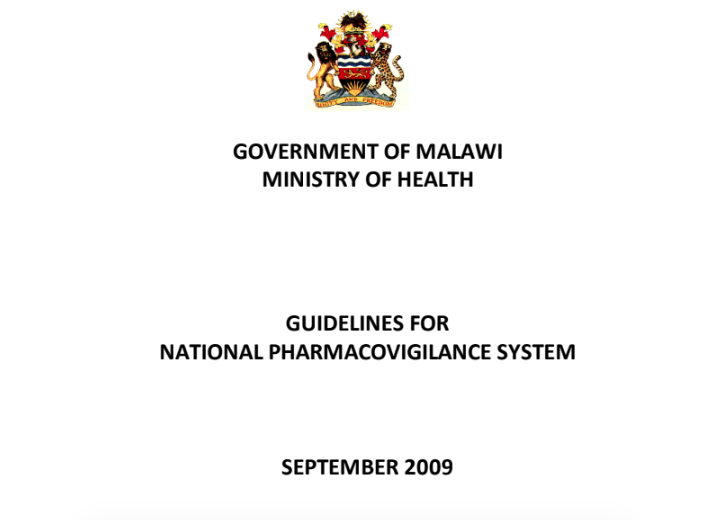Fill out the form below to receive the complete PDF guide directly in your inbox. This resource provides clear, step-by-step guidance to help you make the most of the information we’ve prepared for you.
Malawi
GUIDELINES FOR NATIONAL PHARMACOVIGILANCE SYSTEM
These guidelines establish the framework for the National Pharmacovigilance System (NPS) in Malawi, spearheaded by the Pharmacy, Medicines and Poisons Board (PMPB). The system’s goal is to assure medicine safety and promote the rational use of medical drugs through reliable and timely information exchange. It mandates both spontaneous and active reporting of all suspected Adverse Drug Reactions (ADRs), especially for new treatments like ACTs and ARTs. The document details the structure, including the National Pharmacovigilance Centre (NPC) and District Investigation Teams (DIT) , and provides annexes for standardized reporting, causality assessment, and investigation procedures.

Use Cases
- PMPB (Pharmacy, Medicines and Poisons Board) – Ensure Regulatory Action: The PMPB is mandated to take regulatory action on implicated medicinal products, communicate these actions to manufacturers, and perform subsequent risk assessment.
- Health Care Professionals (HCPs) – Detect and Report All Suspected ADRs: They are encouraged to report all suspected Adverse Drug Reactions (ADRs), including those for vaccines, medical devices, cosmetics, and traditional/herbal remedies.
- National Pharmacovigilance Centre (NPC) – Data Collation and Signal Generation: The NPC collects, clinically evaluates, collates, and analyzes patterns of adverse reactions to distinguish new safety signals from routine information (“noise”).
- District Investigation Team (DIT) – Local Investigation and Follow-up: DITs follow up on pharmacovigilance activities at the district level, investigate specific serious patient reports, and use laboratory data to assist with causality rating.
- Medicines Committee (MC) / Expert Safety Review Panel (ESRP) – Expert Review and Recommendation: This committee acts as the ESRP, reviewing quarterly reports, assessing safety and lack-of-efficacy issues, and recommending appropriate action to the PMPB.
- Pharmaceutical manufacturers – Share Post-Marketing Safety Data: As partners in the program, manufacturers are responsible for sharing post-marketing surveillance data and submitting periodic safety update reports to the National Pharmacovigilance Coordinator.
Key takeaways you'll learn
The resource’s purpose is to establish a robust, nationwide system for detecting, assessing, understanding, and preventing adverse effects or any other drug-related problem. It aims to assure the safety of medicines by ensuring reliable and timely exchange of information, ultimately promoting the rational and safe use of medical drugs in Malawi.
- Legal Mandate and Host: The system is mandated by the Pharmacy, Medicines and Poisons Act , with the Pharmacy, Medicines and Poisons Board (PMPB) taking the lead in setting up and managing the PV system, which hosts the National Pharmacovigilance Centre (NPC).
- Broad Reporting Scope: The scope of reporting is comprehensive, encompassing not only Adverse Drug Reactions (ADRs) but also Product Quality Problems (like contamination or poor packaging) , lack of efficacy , and issues with traditional/herbal remedies.
- Decentralized Investigation and Follow-up: A tiered structure is established for local investigation, with the District Investigation Team (DIT) responsible for detailed follow-up, causality assessment, and data collection at the district level.
- Mandatory Communication and Feedback Loop: The system requires continuous communication, including feedback to reporting health facilities quarterly , disseminating PMPB recommendations through zonal meetings and web-based newsletters , and sharing PV data with the WHO Uppsala Monitoring Centre (UMC).
- Tools for Standardization: The guideline provides specific, mandatory annexes to ensure consistency in the process, including the ADR Reporting Form , ADR Severity Assessment , DIT Investigation Checklist , and Causality Assessment.


